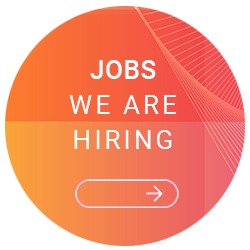Last Updated on 1. July 2025 by mgm-marketing
PDF files are everywhere. Agencies, insurance carriers, and industries that handle heavy document loads rely on them daily. Contracts, notices, policies—all end up as PDFs for customers and in document management systems. Yet many overlook a critical detail: for long-term archiving and accessible use, these documents must meet specific standards. That’s where mgm’s A12 Print Engine steps in.
Why PDF Still Rules
Digital apps keep getting stronger, but PDFs continue to dominate document-based communication. The reason is simple. PDFs work across platforms, remain unchangeable, and fit perfectly for legally compliant archiving. Regulations like Germany’s GoBD require documents to stay tamper-proof, complete, traceable, and accessible for years.
The GoBD, published by Germany’s Federal Ministry of Finance, lays out clear rules for managing and archiving tax-related electronic data. It requires that:
- Documents and entries cannot change unnoticed
- Records remain complete and timely
- Data stays machine-readable at any time
PDF/A plays a central role here, ensuring documents stay readable even 25 years down the line.
With the Barrier-Free Accessibility Strengthening Act (BFSG) set to take effect in 2025, accessibility gains even more importance. Public agencies—and many customer-facing businesses—will soon need to provide accessible digital content, including PDFs.
When Must PDFs Be Accessible?
The BFSG implements the European Accessibility Act (EAA) in Germany. Starting June 28, 2025, digital products and services for end customers must meet accessibility standards. This includes PDF documents.
Who will feel the impact? Mainly businesses offering digital services: online stores, insurance portals, banking apps, digital forms. Accessibility is no longer “nice to have” but a legal requirement.
Micro-enterprises (under 10 employees and €2M annual revenue) are exempt, but for everyone else, action is urgent. Public agencies already follow accessibility guidelines, and the BFSG extends this standard to broad areas of private business.
If your PDFs aren’t accessible yet, now is the time to act. Implementation takes planning. Early projects balance deadlines, quality, and resource use far more efficiently.
A12 Print Engine: Mail Merge on Steroids
The A12 Print Engine forms part of the A12 low-code platform. Think of it like mail merge in Word: templates contain placeholders that auto-fill with data when generating documents. But where Word stops at address fields, the A12 Print Engine goes much further.
It can generate highly complex, individualized documents using dynamic data from A12 applications. Tables, charts, calculated values—everything flows automatically into the final PDF. Even with large files and high volumes, the system delivers impressive speed.
PDF/A and PDF/UA: Standards That Matter
The A12 Print Engine’s true edge lies in compliance. It creates PDF/A files for audit-proof archiving and PDF/UA files for accessible use.
PDF/A stands as the trusted standard for long-term digital document preservation. It embeds fonts, color profiles, and structure directly into the file. The PDF stays readable 10, 20, or 30 years later, regardless of technology changes or software updates. This reliability is vital for agencies, insurance companies, and other organizations with archiving obligations.
PDF/UA ensures content remains accessible for people with disabilities. Screen readers can accurately read text, recognize tables, and navigate structured headings. This deep structural tagging goes beyond minimum compliance—exactly where the A12 Print Engine delivers.
Quick Integration, Immediate Use
For existing A12 projects, integrating the Print Engine is straightforward. You can connect it within a day. Non-technical teams can model templates using the A12 style without programming.
But it’s not just for current A12 users. Any organization can use the A12 Print Engine as long as structured data (like XML) is available for document creation. A built-in WYSIWYM editor helps convert existing templates (even Word documents) into maintainable, easily updated formats with minimal effort. This makes the Print Engine a strong standalone tool for high-volume document environments like insurance or public administration.
Where Accessible PDFs Come to Life with A12
One standout use case demonstrates the A12 Print Engine’s power: the Tax Advisor Chamber’s application portal. This portal centralizes administrative services under Germany’s Online Access Act (OZG), letting members handle applications, authorizations, and licenses digitally.
Here, the A12 Print Engine generates PDF/A and PDF/UA documents that remain both audit-proof and accessible. These documents support internal staff and external applicants alike.
PDF/A-compliant documents are automatically archived in the chamber’s document management system after submission—unalterable, traceable, and readable for decades. This reliability is essential, especially with high volumes tied to professional certifications and examination processes.
The Print Engine can also produce PDF/UA versions, even if not initially required by the project. The decision to adopt a system that covers both archiving and accessibility in a single workflow was intentional.
That decision pays off. With the BFSG on the horizon, organizations now have a tool ready to meet future legal requirements without extra development work. At the same time, standard compliance opens new opportunities, such as accessible notices, multilingual documents, and inclusive communications for diverse audiences.
The technical integration took place in close collaboration with the A12 and platform teams. Today, the Print Engine ensures efficient document creation while promoting digital inclusion.
Conclusion: More Than Just Printing PDFs
The A12 Print Engine transforms what seems like a simple task into a powerful driver for efficiency, compliance, and customer focus. It bridges the gap between modern applications and the demands of document-based communication. In a world where accessibility is no longer optional, it becomes a true game-changer.
Accessible PDFs. GoBD compliant.
Create PDFs ready for long-term archiving. Enable digital inclusion with accessible documents—right from your application.
Want to see how it works?







